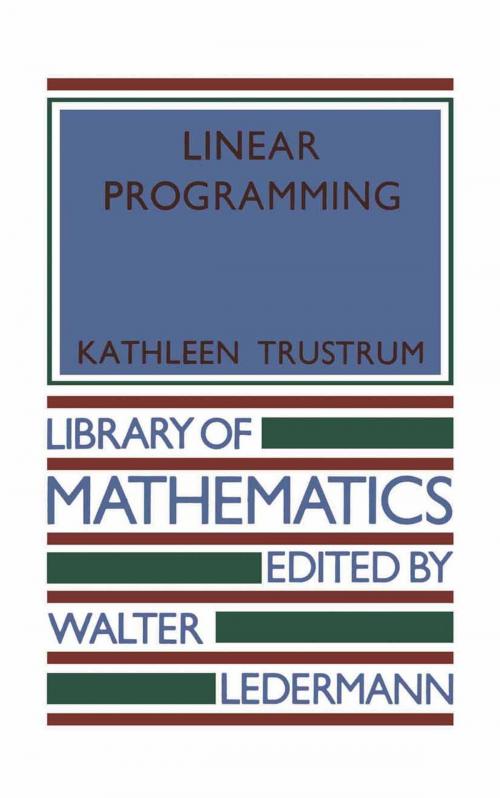Linear Programming
Kids, Natural World, Nonfiction, Reference & Language, Education & Teaching, Science & Nature, Science| Author: | ISBN: | 9789401094627 | |
| Publisher: | Springer Netherlands | Publication: | December 6, 2012 |
| Imprint: | Springer | Language: | English |
| Author: | |
| ISBN: | 9789401094627 |
| Publisher: | Springer Netherlands |
| Publication: | December 6, 2012 |
| Imprint: | Springer |
| Language: | English |
Linear programming is a relatively modern branch of Mathe matics, which is a result of the more scientific approach to management and planning of the post-war era. The purpose of this book is to present a mathematical theory of the subject, whilst emphasising the applications and the techniques of solution. An introduction to the theory of games is given in chapter five and the relationship between matrix games and linear programmes is established. The book assumes that the reader is familiar with matrix algebra and the background knowledge required is covered in the book, Linear Equations by P.M. Cohn, of this series. In fact the notation used in this text conforms with that intro duced by Cohn. The book is based on a course of about 18 lectures given to Mathematics and Physics undergraduates. Several examples are worked out in the text and each chapter is followed by a set of examples. I am grateful to my husband for many valuable suggestions and advice, and also to Professor W. Ledermann, for encourag ing me to write this book.
Linear programming is a relatively modern branch of Mathe matics, which is a result of the more scientific approach to management and planning of the post-war era. The purpose of this book is to present a mathematical theory of the subject, whilst emphasising the applications and the techniques of solution. An introduction to the theory of games is given in chapter five and the relationship between matrix games and linear programmes is established. The book assumes that the reader is familiar with matrix algebra and the background knowledge required is covered in the book, Linear Equations by P.M. Cohn, of this series. In fact the notation used in this text conforms with that intro duced by Cohn. The book is based on a course of about 18 lectures given to Mathematics and Physics undergraduates. Several examples are worked out in the text and each chapter is followed by a set of examples. I am grateful to my husband for many valuable suggestions and advice, and also to Professor W. Ledermann, for encourag ing me to write this book.















